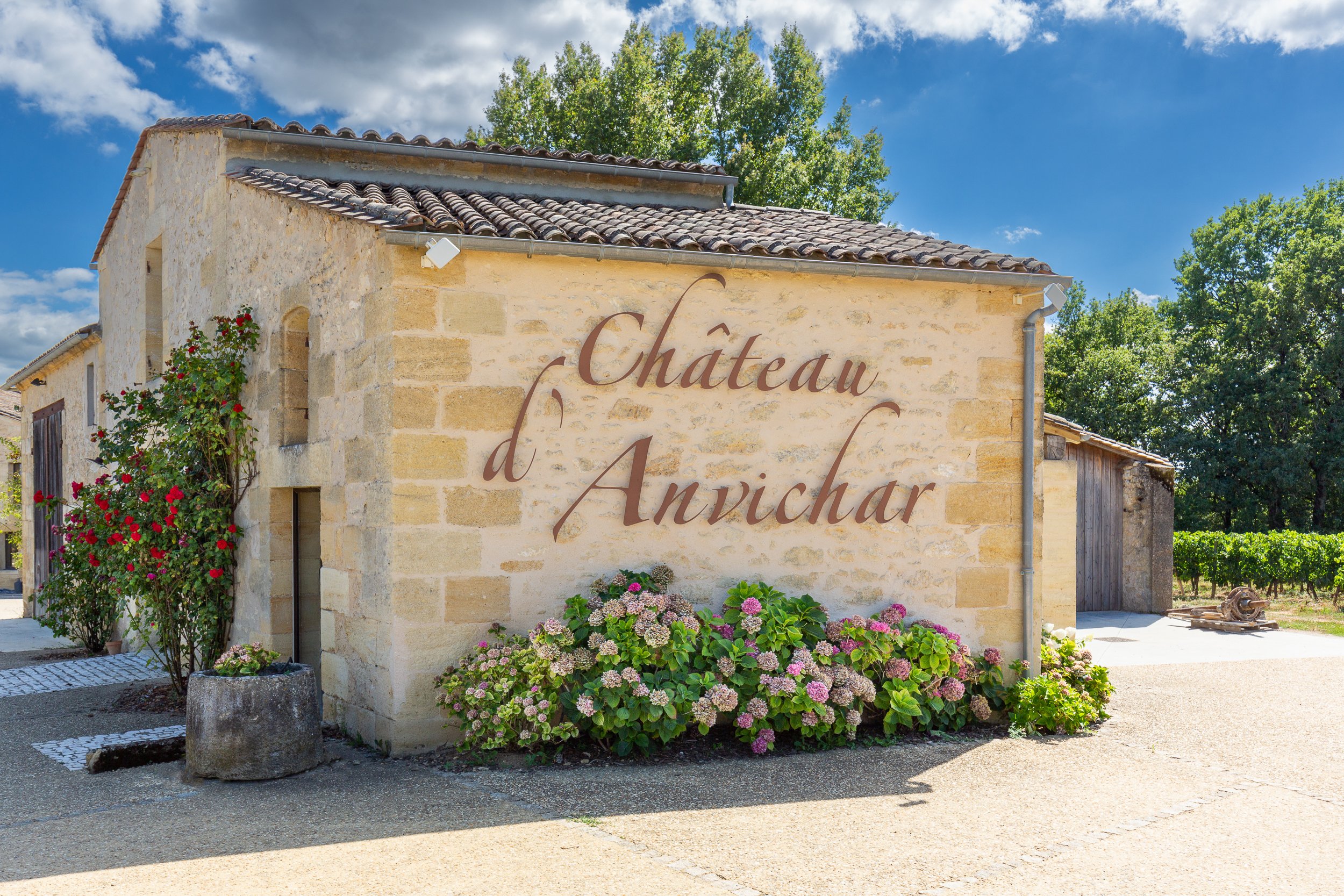
Who We Are
Château d’Anvichar is named after the prior owners’ three sons, Antoine, Victor and Charles. The name was retained; under Bordelaise winemaking tradition, each proprietor is a steward of both the terroir and legacy of this historic region.
Terroir consists not just of the climate and the soil, but also the action and inaction of the people who work on the vineyard. This is august company, and our mostly-female team strives to live up to the impressive standards set by our climate and soil.
Our Story
Lucie Brun, Nathalie Vidaillac, Stephane Apelbaum, Kayla Zaist (dog), Aurore Ferrier and Carol Zaist
Records of winemaking in the area date back almost 2000 years. Respect for history and tradition balance every step, as each vintage is crafted and nurtured to be its best expression of the terroir. Thinking of all children, and the environment, the winery is actively taking steps to qualify as a certified organic winery. We also are conscious of our ecologic footprint, using lighter weight bottles and recycled materials for our boxes, to reduce the ecologic impact of shipping.
This small vintage aims to produce wines with a strong identity, highlighting the terroir, heeding environmental constraints, and honoring winemaking traditions. At the same time, we are open to fresh and conscientious ideas in winemaking.
Stephane Apelbaum, Nathalie Vidaillac, Lucie Brun, Carol Zaist and Aurore Ferrier.
Decoding the Label
Two Trees
The winery, and our lives, are grounded by the two old-growth trees depicted on our label: a 200-year-old oak tree, and a 100-year-old linden blossom tree. Oak trees symbolize strength and endurance. Linden blossom trees are associated with friendship, peace, and altruism. These trees have seen great change in their lives. When faced with challenges, professional or otherwise, their longevity and deep meaning inspire us.
Château
The château is poised on a limestone plateau, overlooking a vine-covered valley. The location has a natural water source, which feeds the vines as well as a historic lavoir, or wash basin. The lavoir was used by those in the village, as was the historic bread oven located in the older portion of the château (now the professional entry). The date of the original house is not yet known, but the newer part of the residence (facing the pigeonnier) is believed to have been completed in 1854, based on a dated stone chimney cap.
Our Merlot vines have a median age of 30 years. They are lovingly tended by Stephane Apelbaum, of Optimum Vineyard Management, and a team of women, as well as Carol Zaist, the vineyard’s owner. In January 2023, we will be co-planting Cabernet Franc vines; in the coming years, they will add spice to our wine. Cabernet Franc vines are more resistant to the climate change facing our appellation and the planet.
Our Vines
Atelier
The atelier is a space for creativity. Like all art, and life, this space has a surprising depth: the covered area at ground level provides sheltered view of the stunning valley of vines; the lower level has a natural rusticity and privacy, to let the artist in everyone take root and soar. The art and artistry of the atelier is balanced by the tradition of the pigeonnier.
Lavoir
The underground stream that nourishes our vines historically filled a lavoir, or wash basin, where the community gathered to wash their clothes (and children). The property’s strong connection with the community is honored and continued by working with local businesses and artists.
Pigeonnier
The pigeonnier, or dovecoat, next to the château historically was used for farming pigeons. Now, it’s a reminder of old traditions and craftsmanship.
The three dogs lovingly featured in the Château d’Anvichar label are real: Gap, a Leonberger who called the château home for his entire life; Kayla, a Rhodesian Ridgeback who appreciates the sunny plateau; and Neville, an English Pointer - Cattledog mix whose exuberance keeps the Pigeonnier empty. We are inspired by the pure joy and loyalty of dogs.











